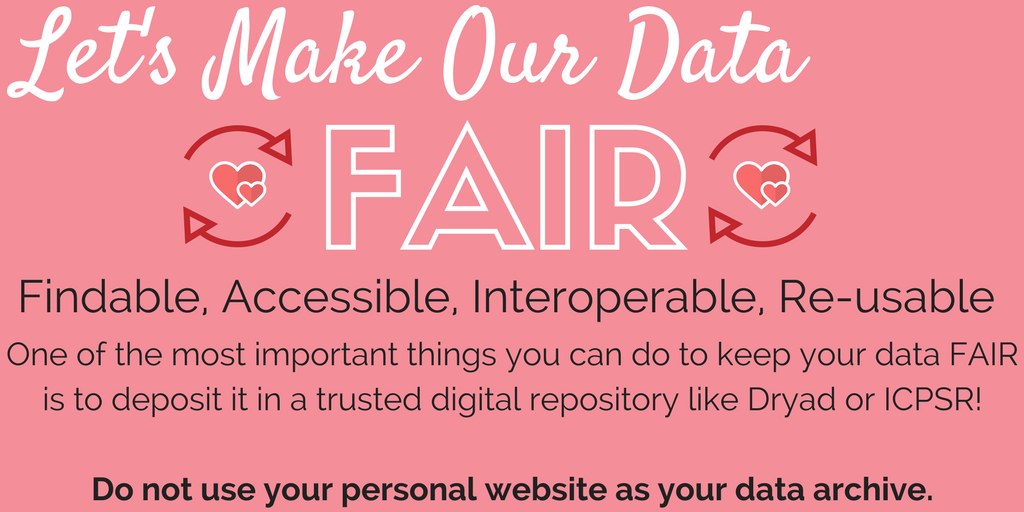The principles behind good data have a nice handy acronym to spark your memory. Good data are FAIR:
- Findable
- Accessible
- Interoperable
- Reusable
Here at NYU’s Data Services, we emphasize interoperability and reusability through our guides and classes focusing on research data management in which we stress the need to select long-term file formats that are software agnostic. In practice, this often means open-access or open-licensed file formats and software.

But we often find it a struggle to convince researchers to consider the ramifications of how to make data findable and accessible. If we think of “accessible” and “reusable” as principles that call for preservation–a process that demands robust curatorial and archives services–the principle of “findable” often demands more flexible, dynamic (especially in terms of online manifestations of research data and analysis) approaches such as a website, print- or e-publication, or some other unique access point. In other words, it often seems natural for researchers to publish their data on a personal or departmental website (and even more effective in terms of “findability”) rather than think of long-term solutions such as a data repository.
Ideally, of course, both approaches would be blended, and there is nothing to suggest that one cannot achieve FAIR principles by putting research data in both places, so long as those locations are linked in some way and at least one of them has the appropriate permanency.
Needless to say, accessible and reusable data are also well-organized and well-documented. It is always worth a visit to a repository such as the ICPSR’s political and social research collections to see how highly curated data should look.
